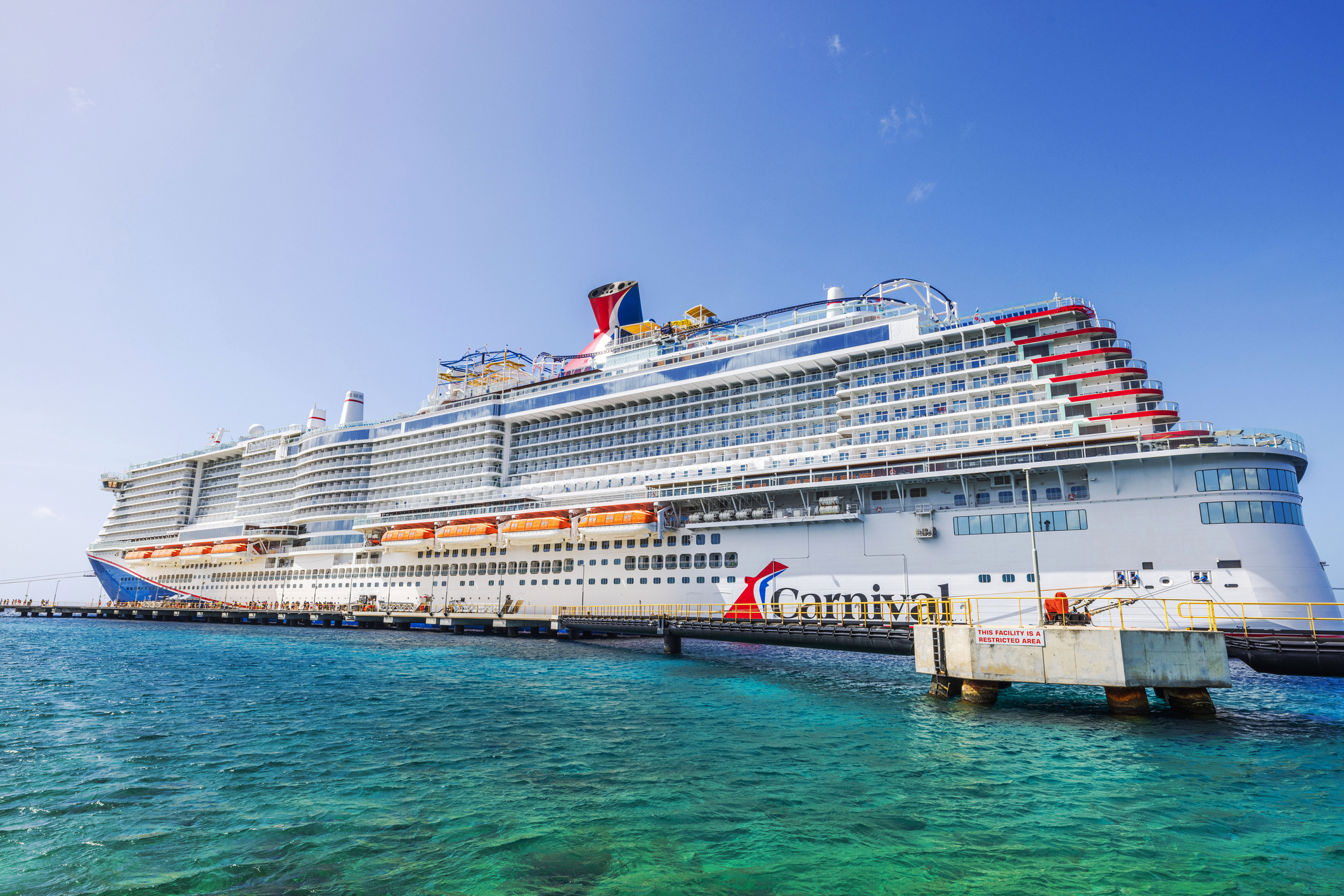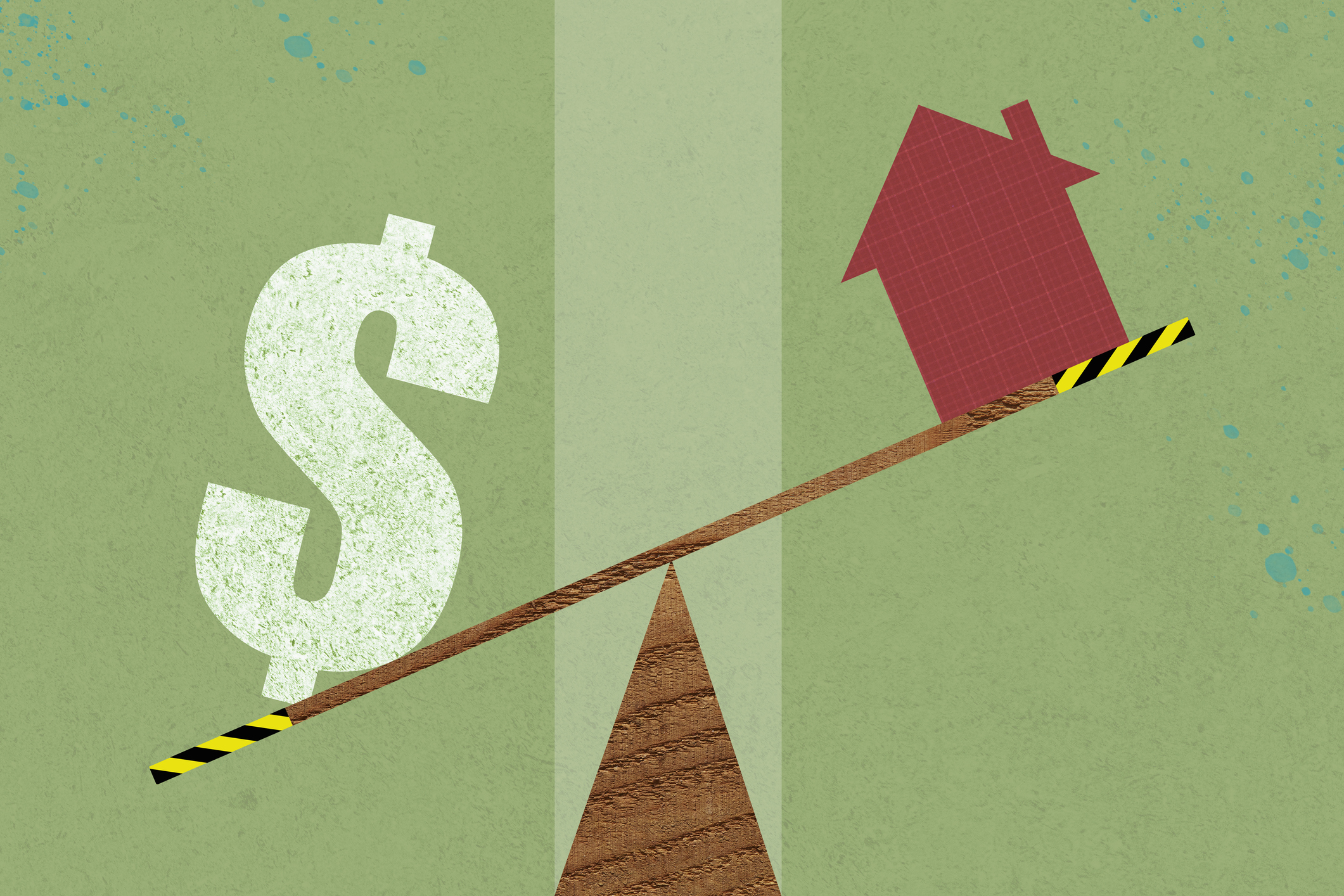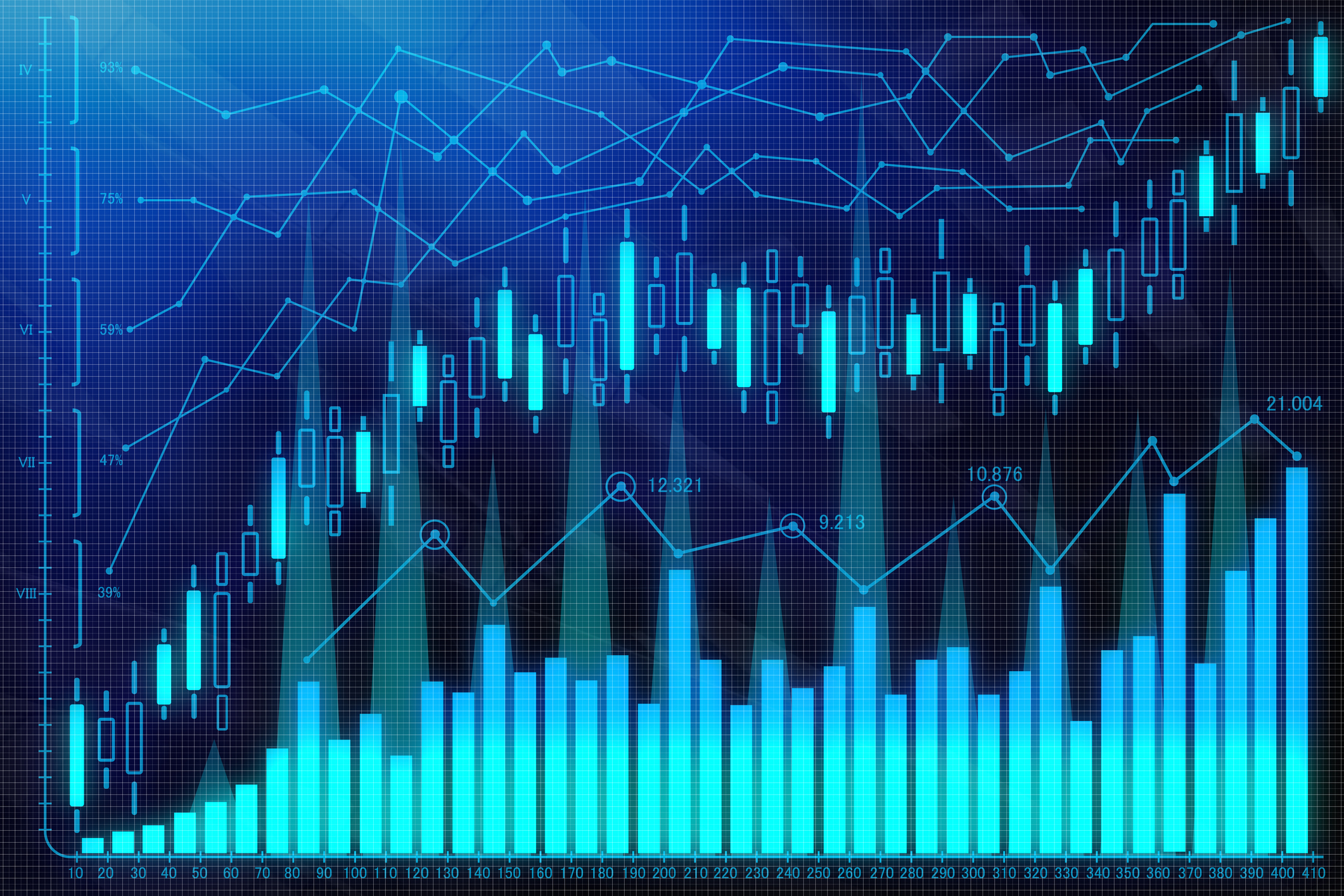The Riskiest S&P 500 Stocks Right Now
Buyer beware: These are five of the riskiest stocks in the S&P 500 at the moment, based on one measure of volatility.


For many investors, the word that most appropriately describes 2025 is "uncertain." There's uncertainty about government trade policies, geopolitical unrest in the Middle East and Ukraine, inflation and interest rates, stock market sentiment, and just about everything else.
In such an environment, many investors look for low-risk, low-volatility stocks. There's no one-size-fits-all approach to measuring a company's risk factors, but one helpful metric is "beta" – a calculation of historic volatility compared to the broad market.
Beta is expressed as a decimalized figure, and a reading of 1.0 means the stock or exchange-traded fund moves perfectly in line with the market.
From just $107.88 $24.99 for Kiplinger Personal Finance
Become a smarter, better informed investor. Subscribe from just $107.88 $24.99, plus get up to 4 Special Issues

Sign up for Kiplinger’s Free Newsletters
Profit and prosper with the best of expert advice on investing, taxes, retirement, personal finance and more - straight to your e-mail.
Profit and prosper with the best of expert advice - straight to your e-mail.
Your favorite S&P 500 index fund has a beta of 1.0, considering it literally invests in the benchmark itself.
A beta that is lower than 1.0 means the stock moves less than the broader market. Sleepy consumer staples stocks such as General Mills (GIS) and The Campbell's Company (CPB) tend to have the lowest betas among S&P 500 stocks.
If the stock's beta is greater than 1.0, it is typically more volatile than the broad market – meaning it's capable of tremendous gains on the good days, but epic crashes when things go south.
With that in mind, we put together a list of the most volatile S&P 500 stocks as measured by their three-year annualized beta. This doesn't mean they are doomed to fail, as some have put up nice gains lately. But it does mean they rank as the riskiest S&P stocks to buy now and investors should proceed with caution.
Data is as of November 28.
Coinbase Global

- Sector: Financials
- Market value: $73.6 billion
- Beta: 3.7
Coinbase Global (COIN) is a publicly traded crypto exchange listed on the Nasdaq and in good standing with major U.S. regulators. That makes it one of the most established and legitimate crypto platforms out there.
It has relationships with mainstream brokers and payment platforms, including Visa (V), which offers credit cards that pay rewards in crypto. So Coinbase is cozy with old-school banking and finance firms despite its innovative connections to digital assets.
At the same time, the financial stock typifies the volatility that, along with uncertainty, has defined the second Trump administration. COIN surged in the immediate aftermath of the November 2024 presidential election but plummeted alongside the broader market amid a chaotic rollout of new tariffs.
COIN rallied once again after the Senate passed the GENIUS Act – a law that aims to provide a regulatory framework for stablecoins. Shares have retreated once more in the second half of the year during a steep sell-off for the broader crypto industry.
Still, crypto's "time on the fringe" is likely ending and will be replaced "by an era of consistent regulation and expanding use-cases with the ultimate potential to supplant the traditional global financial system," says William Blair analyst Andrew Jeffrey.
Jeffrey adds that Coinbase will see an outsized impact from this shift, given its "leadership creates an inherent advantage."
Volatility and uncertainty will keep COIN on this list of riskiest S&P 500 stocks for the time being.
Palantir Technologies

- Sector: Technology
- Market value: $401.5 billion
- Beta: 1.7
Palantir Technologies (PLTR) is up nearly 125% year to date. Indeed, it's one of the best-performing S&P 500 stocks with one month to go in 2025.
There's good reason for that, too, given that the intelligence community and the U.S. Department of Defense are long-term partners of the data analytics and artificial intelligence (AI) platform.
And there are many reasons to expect PLTR to be much more than a flash in the pan based on an AI fad. Indeed, Wall Street is calling for 54% annual revenue growth this year and 41% growth next year. Earnings per share are expected to surge, too.
However, history shows that some growth stocks can crash as hard as they climb. So investors should be aware of the high beta and volatility risk we see in PLTR before presuming this tech stock has nowhere to go but up.
Carnival

- Sector: Consumer discretionary
- Market value: $33.9 billion
- Beta: 3.4
Cruise ship operator Carnival (CCL) developed a reputation as a stand-in for the struggling travel industry writ large during the pandemic.
That made the consumer discretionary stock a prime target for day traders looking to turn a quick profit on big moves related to macro trends involving tariffs, global trade and consumer spending.
But a longer-term look at CCL stock shows that it has a history of making big moves in either direction.
Looking at the price charts across the past 10 years or so indicates that Carnival shares have traded in a wide range of roughly $7 to $70 per share.
These days, CCL trades closer to $25, though many on Wall Street are betting CCL is poised for its next leg up. Indeed, the average price target among the 29 analysts following the stock who are tracked by S&P Global Market Intelligence is $35.76 – almost 40% above current levels.
But investors should be aware that this is definitely one of the riskiest S&P 500 stocks and there's no way of knowing for sure which way the wind will blow.
Tesla

- Sector: Consumer discretionary
- Market value: $1.43 trillion
- Beta: 1.8
Most investors are familiar with the relationship between Tesla (TSLA) CEO Elon Musk and President Donald Trump.
Sure, electric vehicles (EVs) are seen as a technology with a long-term runway, and TSLA shares have benefited from the company being a first-mover in the space with a powerful brand.
But that all changed after Musk turned his attention to Washington, D.C., and disenchanted a large number of left-leaning consumers.
And public feuds with Donald Trump risk alienating the other side of the aisle, too. Indeed, tangible retribution against Tesla – such as the elimination of EV tax credits in the president's "big, beautiful bill" – could come in the form of unfavorable government policies.
Tesla's share price was cut in half between December and March amid backlash to Musk's political ambitions. But TSLA rallied after Elon stepped down from his role at the Department of Government Efficiency (DOGE). Excitement over the company's soft robotaxi launch in late June created additional tailwinds.
And a late-November Tweet from the CEO about Tesla's AI chip ambitions sent the stock even higher.
"All there is to say is that this is the future," wrote Wedbush analyst Dan Ives after Tesla's June 22 robotaxi event in Austin, Texas. The successful launch is "really just the beginning of the Tesla AI story."
But buyers beware: Big price swings in either direction are why Tesla is on this list of the riskiest stocks in the S&P 500 right now.
Caesars Entertainment

- Sector: Consumer discretionary
- Market value: $4.8 billion
- Beta: 2.4
Casino icon Caesars Entertainment (CZR) operates brick-and-mortar gambling facilities, as well as online sports books, in 32 jurisdictions across North America.
Despite its domestic focus, the company has long been dependent on the gambling-friendly cultures across Asia to send along customers from abroad.
And amid rising tensions between the U.S. and its trade partners, which has negatively impacted travel from key markets such as China, CZR stock is down more than 30% in 2025.
The timing's not great, either, with legacy Vegas properties suffering as stiff competition from fresher brands eats into their performance.
But Stifel analyst Steven M. Wieczynski maintains a Buy rating on the stock. "We believe current trading levels are massively undervaluing the long-term growth opportunities of this company," the analyst writes in an October 28 note.
Wieczynski has a $37 price target on Caesars – 59% above current levels. Nevertheless, investors should remain on high alert given that CZR is one of the riskiest S&P 500 stocks right now.
Related content
- 3 Buy-Rated Bargain Stocks to Buy This Holiday Season
- What to Make of a Hot IPO Market
- How to Position Your Portfolio for Lower Interest Rates
Profit and prosper with the best of Kiplinger's advice on investing, taxes, retirement, personal finance and much more. Delivered daily. Enter your email in the box and click Sign Me Up.

Jeff Reeves writes about equity markets and exchange-traded funds for Kiplinger. A veteran journalist with extensive capital markets experience, Jeff has written about Wall Street and investing since 2008. His work has appeared in numerous respected finance outlets, including CNBC, the Fox Business Network, the Wall Street Journal digital network, USA Today and CNN Money.
-
 Should You Tap Your Home Equity Before 2026?
Should You Tap Your Home Equity Before 2026?As borrowing rates and tax law shifts converge, here's what homeowners need to know before pulling equity out of their home.
-
 What Investors May Face in the New Year: Interview
What Investors May Face in the New Year: InterviewKeith Lerner, the chief market strategist and chief investment officer for Truist Wealth, speaks with Kiplinger.
-
 My adult child was laid off. Can we discuss it without ruining the holidays?
My adult child was laid off. Can we discuss it without ruining the holidays?We asked mental health and financial experts for advice.
-
 What Investors May Face in the New Year: Interview
What Investors May Face in the New Year: InterviewKeith Lerner, the chief market strategist and chief investment officer for Truist Wealth, speaks with Kiplinger.
-
 Three Year-End Tax Strategies for Retirees With $2 Million to $10 Million
Three Year-End Tax Strategies for Retirees With $2 Million to $10 MillionTo avoid the OBBB messing up your whole tax strategy, get your Roth conversions and charitable bunching done by year's end.
-
 'Politics' Is a Dirty Word for Some Financial Advisers: 3 Reasons This Financial Planner Vehemently Disagrees
'Politics' Is a Dirty Word for Some Financial Advisers: 3 Reasons This Financial Planner Vehemently DisagreesYour financial plan should be aligned with your values and your politics. If your adviser refuses to talk about them, it's time to go elsewhere.
-
 For a Move Abroad, Choosing a Fiduciary Financial Planner Who Sees Both Sides of the Border Is Critical
For a Move Abroad, Choosing a Fiduciary Financial Planner Who Sees Both Sides of the Border Is CriticalWorking with a cross-border financial planner is essential to integrate tax, estate and visa considerations and avoid costly, unexpected liabilities.
-
 UNH Sparks a 408-Point Surge for the Dow: Stock Market Today
UNH Sparks a 408-Point Surge for the Dow: Stock Market TodayThe best available data right now confirm both a slowing employment market and a December rate cut, a tension reflected at the equity index level.
-
 Medline IPO: Should You Buy MDLN Stock?
Medline IPO: Should You Buy MDLN Stock?The massive Medline IPO is close at hand, with the medical supply company expected to start trading by the end of the year.
-
 I'm a Financial Adviser: This Tax Trap Costs High Earners Thousands Each Year
I'm a Financial Adviser: This Tax Trap Costs High Earners Thousands Each YearMutual funds in taxable accounts can quietly erode your returns. More efficient tools, such as ETFs and direct indexing, can help improve after-tax returns.
-
 A Financial Adviser's Guide to Divorce Finalization: Tying Up the Loose Ends
A Financial Adviser's Guide to Divorce Finalization: Tying Up the Loose EndsAfter signing the divorce agreement, you'll need to tackle the administrative work that will allow you to start over.